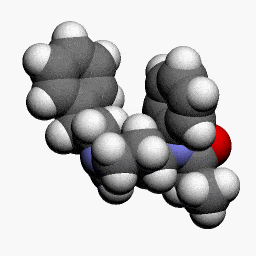Opioid analgesics are prescribed by doctors to help relieve the pain associated with certain conditions like cancer, arthritis, and chronic pain syndromes (1). This type of medication acts as a natural androgen, which has the effect of blocking the action of prostaglandins. This type of medication is also known as non-steroidal anti-inflammatory drugs (NSAIDs). Opioid analgesics are usually prescribed for short periods of time and relief is felt after the medication is discontinued. The pain usually improves in a matter of a few days but it can take as long as six months before full relief is felt. Opioid analgesics should be taken only on the advice of your doctor.

Opioid analgesics are usually recommended for short-term management in cases where immediate relief is required and controlled pain is needed for patients with moderate to severe pain (2). Opioid analgesics are sometimes referred to as narcotic analgesics and are more commonly prescribed for patients who suffer from conditions such as arthritis or fibromyalgia. However, the pain-relieving property of NSAIDs has been shown to extend beyond the realm of these diseases. As a result, the use of opioids for the relief of pain has rapidly increased and there are now numerous types of opioid analgesics available for prolonged use.
The Main Types Of Opioid Analgesic
There are two main types of drugs that are used as analgesics. They are referred to as analgesics and narcotics. Codeine is the most common of the opioids that are used for pain management. It is also the most widely prescribed drug for patients receiving opioid analgesia for chronic and severe pain. Although codeine is an opioid, it is not considered as being a true opiate since it does not cause opiate receptors to release opiates. Therefore, patients receiving codeine for chronic pain do not receive the same kind of high that one would get from opium, but rather, they experience a similar level of comfort from the drug (3).
The second type of opioid analgesic that is most commonly used for acute or chronic pain management is oxycodone. Although it is not classified as an opiate, it is often used to alleviate the discomfort associated with severe pain. In fact, the number of patients receiving oxycodone for chronic pain is growing dramatically (4). Other commonly used opioids include morphine, hydrocodone, hydromorphone (Doral), and diazepam.
Opioid Analgesic Use With Other Diseases
Some of the opioids approved by the FDA are being investigated for their potential use in the treatment of diseases and disorders such as depression, Parkinson’s disease, migraine headaches, chronic obstructive pulmonary disease, nasal congestion, restless leg syndrome, and certain types of muscular or skeletal disorders. Because opioids have the potential to be highly addictive and thus produce both physical dependence and psychological addiction. Patients must be carefully monitored if they are to undergo therapy with these drugs. Long-term studies are currently underway to evaluate the potential for opioids to provide additional help for patients suffering from conditions such as substance abuse or chronic pain (5). For example, oxycodone is being studied for its ability to reduce tremors associated with postoperative nausea and pain. Long-term effects of occupancy of an opioid agonist such as heroin or morphine on the serotonergic control system have been examined in animals, but results so far suggest little danger.

Non-narcotic Pain Relievers
Commonly used non-narcotic pain relievers such as acetaminophen, aspirin, and ibuprofen are also available. Although these drugs provide relief for moderate to severe pain, some patients (especially those with chronic illnesses) should still receive medical care if the doses prescribed are at doses greater than the maximum amount recommended for safe consumption by adults. The risk of death is considerably greater for children and adolescents than for adults, although the risks tend to be of longer duration. Long-term use of high doses of non-narcotic analgesics can result in severe health complications (6).
When taking medications to relieve pain, the patient must be monitored for signs of misuse or addiction. This can be done by regularly visiting a pharmacist who may be able to detect the signs of misuse or addiction. This can prevent health consequences from occurring. It is also important for family members and caregivers to be aware of the dangers of taking these drugs. If you suspect that your loved one is abusing prescription drugs, contact a drug treatment facility. They can refer you to a facility that will best meet your needs.
Opioid analgesics can be used in combination with other drugs to prevent or alleviate the adverse side effects of acute or chronic use. When opioids are taken with benzodiazepines, for example, the combined effect of the two medications can bring about less serious health consequences than either type of medication alone. OxyContin can be used in conjunction with codeine and hydrocodone to effectively counter the negative side effects of long-term use of these opioids. Discuss the options available with your doctor to determine what treatment strategy is right for your loved one.
- Ibogaine: Exploring the Potential and Perils of a Psychedelic Therapy
- Behavioral Therapy: All You Need To Know About Behavioral Therapy
- Substance Use Disorders: Understanding the Science, Risks, and Recovery
- Cognitive Behavioral Therapy (CBT): Unveiling the Depths of a Transformative Approach
- Mescaline: Exploring the Science, History, and Therapeutic Potentials


Recent Comments